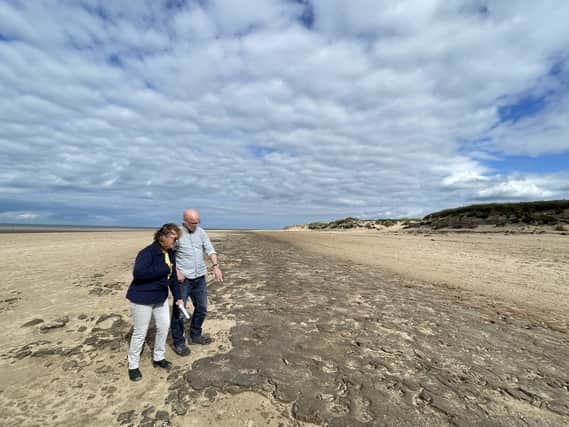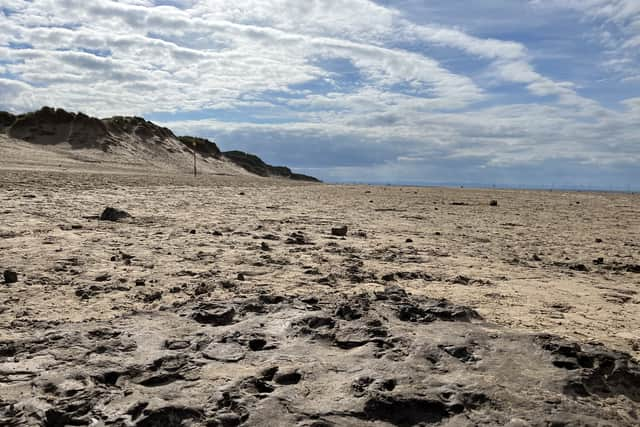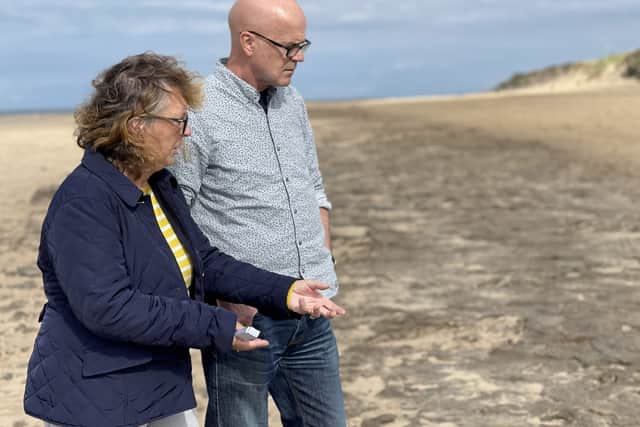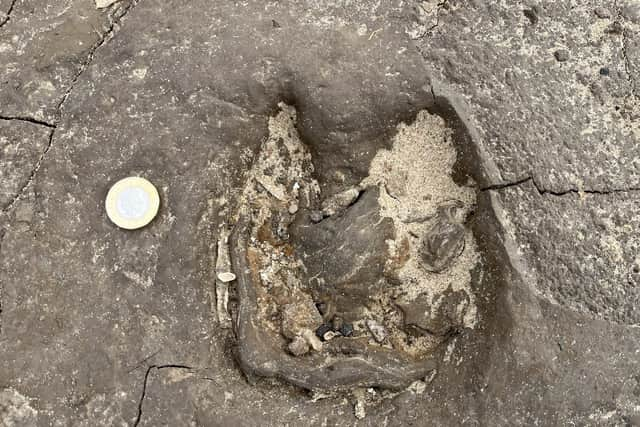Hundreds of ancient human footprints dating back 9,000 years found at Formby beach


Hundreds of ancient human footprints dating back as far as 9,000 years have been found alongside prehistoric animal tracks on Formby Beach.
A hub for coastal wildlife and home to prehistoric walking trials, this isn’t the first time mystery footprints have been spotted on the beach.
Advertisement
Hide AdAdvertisement
Hide AdDubbed the ‘Serengeti of Europe,’ scientists say the newly-discovered footprints show wolves, lynx and wild boar roamed the area alongside humans before a major decline in biodiversity 5,500 years ago.
The first prints date back almost 9,000 years and the most recent are about 1,000 years old, according to researchers from the University of Manchester.
Their findings, published in the journal Nature Ecology and Evolution, reveal how the coastal environment transformed over thousands of years, as sea levels rapidly rose and humans settled permanently by the water.
The sandy stretch of coast is already known to be home to one of the largest collections of prehistoric animal tracks on Earth.


Advertisement
Hide AdAdvertisement
Hide AdNow experts found that the area close to the modern shoreline in Formby was a hub of human and animal activity in the first few thousand years after the last glacial period. It was such a biodiversity hotspot with large grazers and predators that it has been dubbed a ‘northwest European Serengeti’, a reference to the protected area in Tanzania.
Dr Allison Burns, who spent six years undertaking the field research said: “The Formby footprint beds form one of the world’s largest known concentrations of prehistoric vertebrate tracks.
“Well-dated fossil records for this period are absent in the landscapes around the Irish Sea basin.
“This is the first time that such a faunal history and ecosystem has been reconstructed solely from footprint evidence.”


Advertisement
Hide AdAdvertisement
Hide AdThe researchers also show both animals and humans lived in the area closest to the shoreline for the first few thousands years after the last ice age.
The size and shape of one of the human footprints discovered suggest it belonged to a young man, perhaps a teenager.
The experts have also noticed a decline in large mammals in the footprint record, which could be the result of sea level rise and the development of agricultural economies or that more people were hunting, due to the rise in the human population.


Fellow author Professor Jamie Woodward said: “Assessing the threats to habitat and biodiversity posed by rising sea levels is a key research priority for our times – we need to better understand these processes in both the past and the present.
“This research shows how sea level rise can transform coastal landscapes and degrade important ecosystems.”
Comment Guidelines
National World encourages reader discussion on our stories. User feedback, insights and back-and-forth exchanges add a rich layer of context to reporting. Please review our Community Guidelines before commenting.